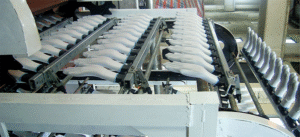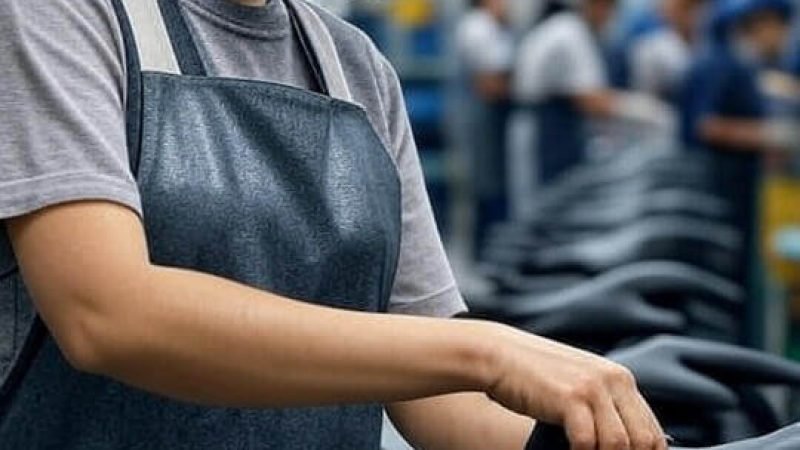Gloves protect our hands in many situations. From medical workers to factory employees, people use gloves for safety and hygiene. But how do these gloves get made? The process involves several steps and special machines.
Types of Gloves Made in Factories
Factories produce different types of gloves. Medical gloves are thin and flexible. Work gloves are thick and strong. Rubber gloves help with cleaning tasks. Each type needs different materials and methods.
The most common gloves are disposable ones. These include latex, nitrile, and vinyl gloves. Workers wear them once and throw them away. This keeps germs from spreading.
Raw Materials Used
Glove makers use various materials. Latex comes from rubber trees. Nitrile is a synthetic rubber. Vinyl is made from plastic chemicals. Cotton and leather are used for work gloves.
The quality of materials affects the final product. Good materials make strong gloves that don’t tear. Poor materials create weak gloves that break under pressure.
The Manufacturing Process
Step 1: Preparing the Material
The process starts with mixing raw materials. Workers combine latex or other substances with chemicals. These chemicals make the gloves stronger and more flexible. The mixture must be smooth and free of lumps.
Temperature control is important during mixing. Too hot or too cold affects the quality. Most factories keep the mixture at room temperature.
Step 2: Dipping the Molds
Clean metal molds shape the gloves. These molds look like hands. Workers dip the molds into the liquid material. A thin layer sticks to the mold surface.
The thickness depends on how long the mold stays in the liquid. Thicker gloves need longer dipping time. Medical gloves are thin, so they need less time.
Step 3: Curing and Drying
After dipping, the gloves need to dry. Large ovens heat the molds to set the material. This process is called curing. It makes the gloves strong and elastic.
Different materials need different temperatures. Latex cures at lower heat than nitrile. The timing must be exact to avoid weak spots.
Step 4: Removing from Molds
Cool molds make glove removal easier. Workers use air pressure or water to separate gloves from molds. The gloves turn inside out during this step.
Care is needed to avoid tearing. Damaged gloves go to waste, which costs money. Good gloves machine manufacturer equipment reduces waste.
Step 5: Quality Testing
Every batch of gloves gets tested. Workers check for holes, tears, and weak spots. They also test the gloves’ strength by stretching them.
Some gloves go through water tests. Workers fill them with water to find tiny holes. Only perfect gloves pass these tests.

Modern Manufacturing Equipment
Today’s glove factories use advanced machines. These machines work faster than old methods. They also make fewer mistakes.
Computer systems control the temperature and timing. This ensures each glove meets quality standards. The machines can run day and night with minimal supervision.
A reliable gloves machine manufacturer provides equipment that lasts for years. Good machines need less maintenance and produce better gloves.
Quality Control Standards
Medical gloves follow strict rules. Government agencies test them before approval. The gloves must meet safety requirements for hospitals and clinics.
Work gloves have different standards. They must protect against cuts, chemicals, or heat. Each type of protection needs special testing.
Environmental Considerations
Glove manufacturing creates waste materials. Factories try to reduce this waste through recycling programs. Some companies reuse failed gloves in other products.
Water usage is another concern. The manufacturing process requires clean water for rinsing and cooling. Many factories install water treatment systems.
The Future of Glove Manufacturing
New technologies make glove production more efficient. Robots help with packaging and quality control. Smart sensors monitor the manufacturing process.
Scientists develop new materials that are stronger and safer. These materials might replace current options in the future.
Conclusion
Glove manufacturing combines chemistry, engineering, and quality control. The process starts with raw materials and ends with products that protect millions of people. Each step requires careful attention to detail.
From medical workers saving lives to mechanics fixing cars, gloves play a vital role in our daily lives. Understanding how they’re made helps us appreciate the science and skill behind these simple but important items.
The partnership between manufacturers and gloves machine manufacturer companies ensures we have safe, reliable gloves when we need them most.
